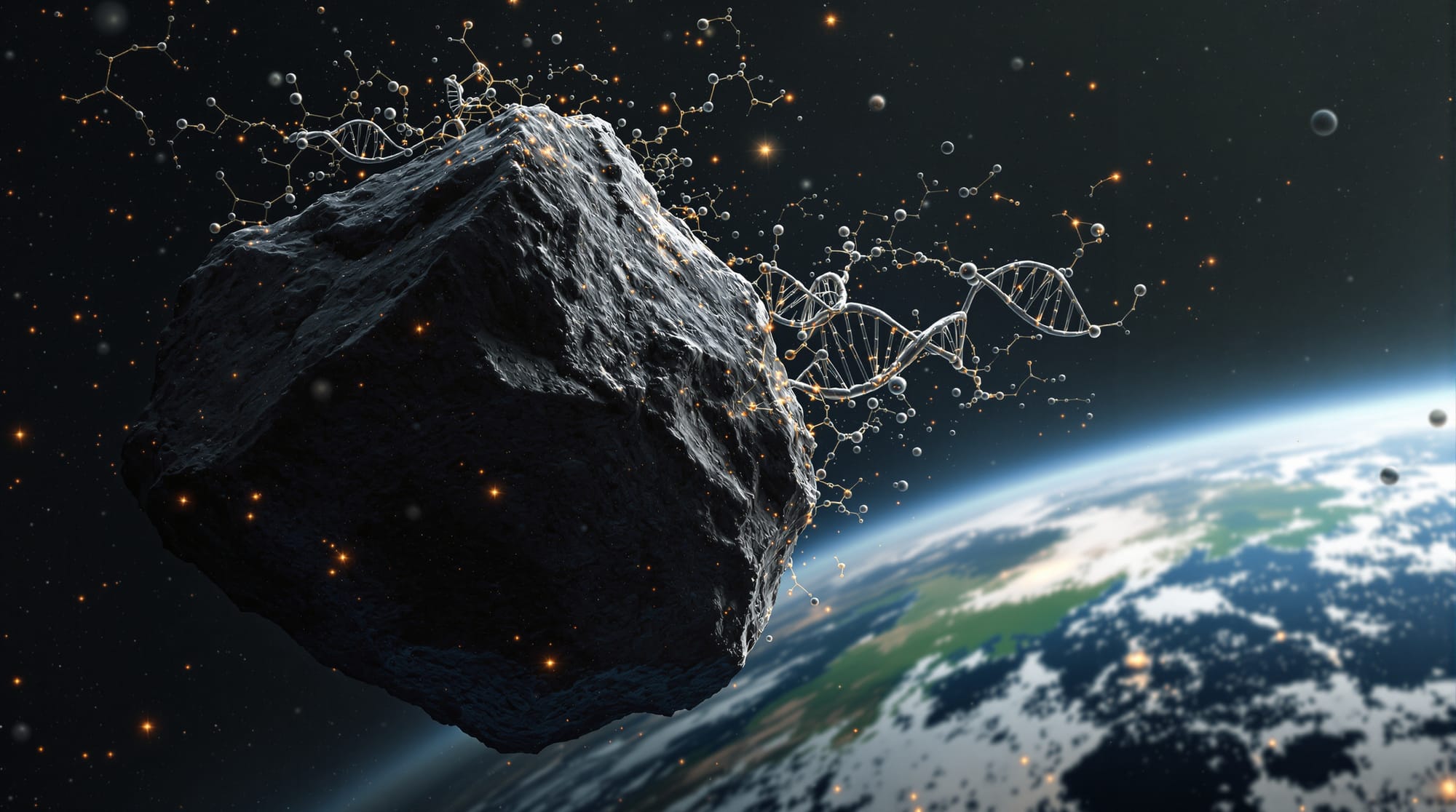DNA and RNA Bases Found in Meteorites: What It Means for Life's Origins

In a groundbreaking discovery that deepens our understanding of life’s potential cosmic origins, scientists have now confirmed the presence of all five nucleobases—the essential building blocks of DNA and RNA—in meteorites. This includes adenine, guanine, cytosine, thymine, and uracil. These molecules, critical for encoding genetic information, have been detected in carbon-rich meteorites that originated billions of years ago, potentially predating Earth itself.
The Breakthrough Discovery | A Cosmic Connection | The Science Behind the Molecules | Scientific Caution and Open Questions | Implications for the Origin of Life | What Comes Next? | Conclusion | Sources
The Breakthrough Discovery
For decades, researchers had identified some nucleobases—adenine, guanine, and uracil—in meteorite samples. However, cytosine and thymine remained elusive due to their chemical fragility and low abundance. In 2022, a team led by Yasuhiro Oba published a pivotal study in Nature Communications, using refined extraction techniques and advanced liquid chromatography–mass spectrometry (LC-MS) to detect these two bases in three carbonaceous meteorites: Murchison, Murray, and Tagish Lake.
The team used ultrapure water extraction at low temperatures, avoiding the acid or heat treatments that can destroy delicate molecules. This innovation allowed them to detect nucleobases at parts-per-trillion concentrations—extraordinarily small, yet scientifically significant.
A Cosmic Connection
Meteorites—particularly carbonaceous chondrites—are remnants of the early solar system, preserving ancient organic chemistry. Their discovery of genetic bases raises a tantalizing possibility: the raw ingredients for life may have arrived on early Earth via space rocks.
In 2025, NASA’s OSIRIS-REx mission returned pristine samples from asteroid Bennu, which were kept isolated from Earth’s biosphere. Preliminary analyses confirmed the presence of all five nucleobases, reinforcing earlier findings and minimizing the risk of terrestrial contamination.
This lends weight to the panspermia hypothesis—the idea that life's building blocks, or life itself, might have originated in space and been delivered to Earth (and possibly other worlds) via meteoritic or cometary bombardment.
The Science Behind the Molecules
The five nucleobases can be divided into two groups:
- Purines: Adenine (A) and Guanine (G) – previously detected in multiple meteorites
- Pyrimidines: Cytosine (C), Thymine (T), and Uracil (U) – only recently confirmed
These bases are not biologically active on their own, but they are essential components of nucleotides—the molecules that make up DNA and RNA. The presence of isomeric and related nitrogen-containing heterocycles in meteorites further suggests that a diverse, prebiotic chemistry occurred in space.
Notably, the molecular patterns observed in the meteorites align with those produced in photochemical experiments simulating interstellar ice chemistry, hinting at an interstellar or protoplanetary origin.
Scientific Caution and Open Questions
Despite the excitement, researchers are cautious. Several caveats remain:
- Contamination risks: Earth-based contamination is a persistent concern, though OSIRIS-REx samples help mitigate this issue.
- Extremely low concentrations: The detected levels are far below biological relevance, though their presence is still meaningful.
- Chemical fragility: Bases like cytosine degrade rapidly, raising questions about their stability in space and planetary environments.
- Incomplete synthesis: While the bases exist, there’s no evidence of fully formed nucleotides or functional RNA/DNA molecules.
- Alternative pathways: The presence of structural isomers and related compounds suggests multiple chemical routes, not all biologically relevant.
Implications for the Origin of Life
This discovery doesn’t prove that life came from space. But it strengthens the hypothesis that some components of life could have been delivered to early Earth—seeding a chemically fertile environment that eventually gave rise to biology.
It also raises broader questions: If nucleobases can form in space and survive delivery to planets, might life—or pre-life chemistry—be a cosmic phenomenon, not limited to Earth?
What Comes Next?
- Further analysis of Bennu samples and upcoming JAXA's MMX mission to Phobos could provide deeper insights into organic delivery across the solar system.
- Studies in prebiotic chemistry are exploring how such extraterrestrial molecules might assemble into functional nucleotides and polymers on early Earth.
- Isotopic analysis and simulated planetary environments will test the stability and reactivity of these molecules under various conditions.
Conclusion
The discovery of all five DNA and RNA bases in meteorites marks a major milestone in the search for life’s origins. It suggests that life's fundamental components are not unique to Earth—but may instead be common in the cosmos, forged in the cold depths of interstellar space and delivered by ancient space rocks.
This is not proof that life came from the stars—but it’s one of the strongest pieces of evidence yet that the story of life on Earth may have begun long before Earth itself.
Sources
- Oba, Y., et al. (2022). Identifying the wide diversity of extraterrestrial purine and pyrimidine nucleobases in carbonaceous meteorites. Nature Communications
- NASA Goddard. (2022). Meteorites contain a diversity of extraterrestrial nucleobases. NASA Science Nugget
- Reuters. (2025). Building blocks of life found in samples from asteroid Bennu. Reuters Article
- IFLScience. (2022). DNA and RNA bases—missing building blocks of life on Earth—found on meteorites. IFLScience Article
- Wikipedia. (General background)
